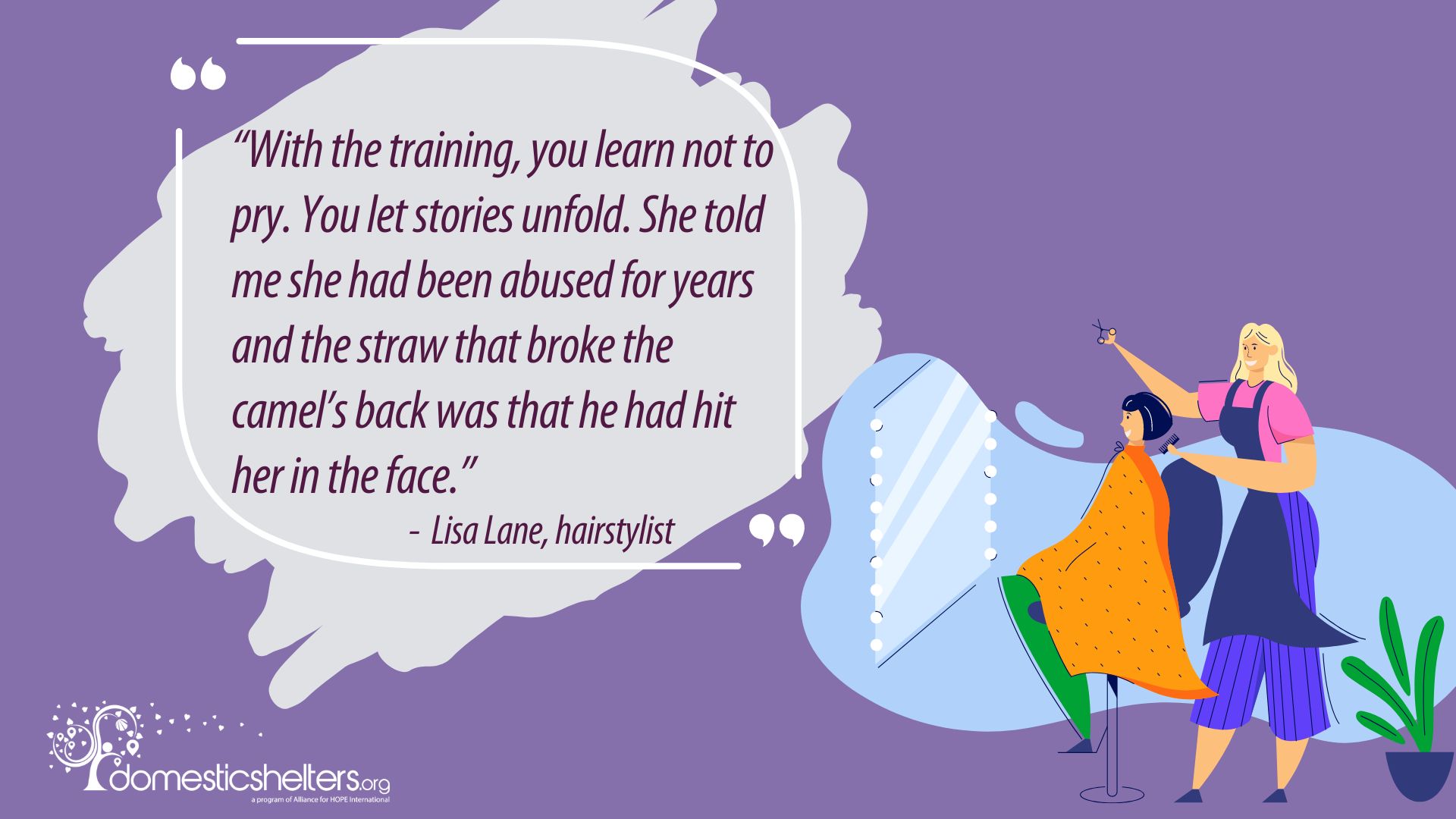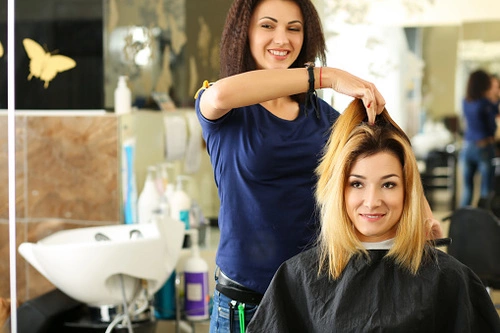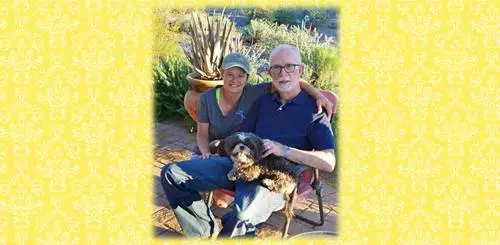1. Select a discrete app icon.

notes
Hairstylists May Hear About Domestic Violence First
Clients often trust their stylists with this important disclosure—what to do if that stylist is you
- May 01, 2024

This article was originally published in 2016. It was updated in 2024.
Lisa Lane has heard a lot of stories from her clients in 40-some years of hair styling. There’s an intimacy in doing someone’s hair—in cutting off dead ends, in trusting the process of creating a whole new look, lightening the literal weight on someone’s shoulders. In the process, says Lane, “we establish a relationship. We see every part of you.”
You can’t deny that hairstylists and therapists share more in common than just a suffix in their titles, and because of this, hairstylists often find themselves in the unique positions of learning their clients’ secrets. Sometimes, this includes a disclosure of intimate partner abuse as a client settles into the chair.
“This lady came to me for over 10 years. She was a very strong woman. She held a leadership position at her job,” says Lane, who owns Lisa’s of Annapolis, her salon in Maryland. “She came to me one day wearing sunglasses that she didn’t want to take off.”
When it was time to shampoo her client’s hair, Lane asked her to take off the glasses.
“I could see the bruise around her eye. It was just her and I in the shop. With the training, you learn not to pry. You let stories unfold. She told me she had been abused for years and the straw that broke the camel’s back was that he had hit her in the face.”
Lane is one of thousands of stylists across the country to have completed the CUT IT OUT training since it began in 2003 by the Professional Beauty Association. The goal: to teach salon professionals, barbers, estheticians, massage therapists and other beauty professionals how to recognize the signs of domestic violence and how to offer support.
Every year, CUT IT OUT connects domestic violence advocates with professionals at salons, schools and beauty events across the country. In a 1 ½-hour training session, salon professionals learn the three Rs:
- Recognizing signs of verbal and physical domestic abuse
- Responding to the client appropriately
- Referring the client to professional help
Lane said the training was a no-brainer for her. She took it as part of her CEUs or continuing education credits as a stylist.
“Once you establish a relationship [with a client], they are closer to you more so sometimes than a family member. Standing over a client for an hour or more, there’s often small talk about the humdrum of daily life. Kids, work, marriage. But over time, those conversations can deepen. A friendship is built.”
As for the client who disclosed to Lane that her husband had hit her, Lane says she then told her stylist she was leaving him.
“She broke down and cried telling me this story. Everyone from her close friends to her family had discouraged her from leaving him, asking her, ‘Are you sure? You have a great life.’”
Lane suspects her client hadn’t discussed his abuse with anyone but her.
“I told her to contact me once she got settled.” Lane says she was worried the woman’s husband would retaliate against his wife leaving, but she got out safely.
“She called me and she was vibrant,” Lane remembers. “She was herself again.”

Brigid’s Stylist Saved Her Life
Brigid Ebert grew up as one of 13 children in what she calls a strictly disciplined household. “Today it would probably be considered abusive, but back in the ’60s we didn’t think of it that way,” she says. That upbringing led her to believe that the abuse she endured at the hands of her husband in her 25 years of marriage wasn’t all that bad.
“I thought, since I didn’t have a broken arm and I never went to the emergency room, it wasn’t actually abuse or violence. I thought all men did that,” she says.
But someone in Cox’s life disagreed. Beth was Cox’s hairdresser in Atlanta for more than 15 years, and Cox found herself confiding in her during their styling appointments.
“As things were getting worse, I was talking to her,” Cox says. “The more I talked, the more Beth got really quiet. She came around the chair and looked me in the face and said, ‘I know you think it’s not that bad, but would you at least fill out a questionnaire?’ I was a little taken aback,” Cox admits.
Beth handed Cox a manila envelope that contained both the questionnaire and extensive information about local domestic violence shelters and resources. Cox completed the 10 questions and at the end saw that answering “yes” to three or more questions meant you could be in grave danger. Cox had nine “yes” responses.
She quickly put a plan in place to leave her husband. It was a rocky process, but over time she got a restraining order, filed for divorce and relocated to Scottsdale, Ariz., where her sister lived. She credits Beth for recognizing her struggles and giving her the information she needed to break free.
Today, Cox is remarried and has helped other domestic violence survivors escape their abuse as a speaker, novelist and CUT IT OUT trainer. Her former hairdresser, Beth, doesn’t know what a difference she made in Cox’s life. Things happened quickly once Cox started the process of leaving her husband, and she was no longer living in Atlanta. When she returned later, the hair salon was no longer there. Cox says, “I want to get in touch with her so badly. She saved my life.”
An Eye-Opening Experience for Stylists
Providing training in domestic violence not only helps survivors, but also the stylists who may not have been aware of all of the nuances of abuse. That applied to Lane, who says she was surprised to learn how much of domestic violence never actually involves an abuser putting their hands on a victim.
“A lot of times we think the violence is just physical. But quite a bit of the time, it’s emotional and mental. And I found out about financial abuse. That was shocking to me.”
Financial abuse is a tactic almost all abusive partners employ, many times on top of other types of abuse, such as physical and psychological. Financial abuse not only denotes an abuser controls the money, but also often times traps a survivor indefinitely by rendering her dependent on the partner for money, by keeping the survivor on a strict allowance or restricting money all together, by forbidding a partner to work, by forcing a partner to work but then demanding her paycheck, or by purposefully ruining her credit score so she can’t obtain a credit card, a lease or a loan in the future.
Lane says she also learned how to spot the more subtle signs of a power and control dynamic in a relationship that her clients might give clues to.
“I had a client that, every time she would want a service, she would be nervous, on edge. She would say, ‘In the summer, my husband likes my hair a little lighter,’ and we would color it lighter. And then she’d come back and say her husband said it was too light.”
If Lane suspects her client may not feel safe at home, she just lets them talk, oftentimes asking if they want to go to a private room so they can feel at ease. She has flyers placed around her salon advertising domestic violence services nearby.
“I’ll just say, ‘You know what? I have some resources for you. If you need it, this is something I can get to you.”
For many survivors, all it takes to reach out for help is one person who believes them without judgment. Lane hopes that person can be her.
“With CUT IT OUT, you get trained on these different types of abuse and you can better detect it, it helps you just react when you feel like the need is there.”
Donate and change a life
Your support gives hope and help to victims of domestic violence every day.
Looking for someone to speak with? Enter your location to find phone numbers for domestic violence experts in your area.
Have a question about domestic violence? Type your question below to find answers.







